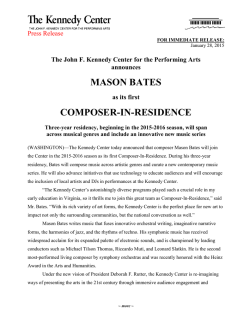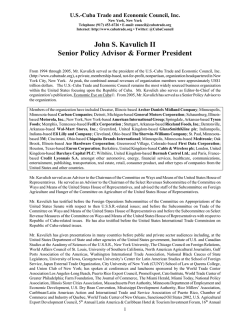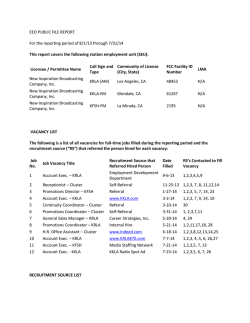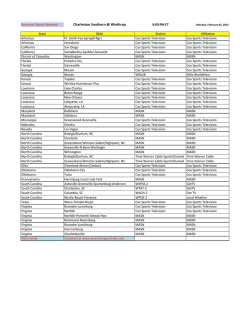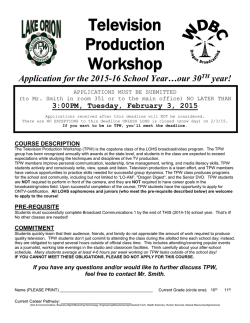
INTRODUCTION
INTRODUCTION Audiences are unnatural phenomena. They do not exist in nature, but are created in the course of human interactions – with each other and with the technologies we invent to make our communications more enjoyable and entertaining, more powerful, fast and efficient. The twentieth-century technologies (film, radio, television) addressed masses of people simultaneously. These mass media sought to attract and control mass audiences, and they funded the development of communication forms that suited mass broadcasting and consumption – forms like the soap opera; the news broadcast; the situation comedy. Later in the century, newer technologies (the transistor radio, audio and video cassettes; CD and DVD players; games consoles) increased the range of situations where people could be audiences. The proliferation of technologies for reproduction and distribution of media forms allowed people to enjoy them in situations of their own choosing rather than at the whim of the broadcaster. By the turn of the twenty-first century, interactive digital technologies had broken the last vestiges of dependence on simultaneous mass distribution. A network and database logic capable of sustaining individual interactivity on a global scale has begun to replace the cumbersome mass media technologies of the broadcasting era. The power of the networked audience is already causing a reorganization of the ways in which media companies control the distribution of media forms. The orchestrated world-wide release of the fifth Harry Potter book, for example, is a dramatic instance of mass publishing under threat. In this case, new technologies had forced world-wide release as a strategy to avoid piracy and copyright infringements that would have followed a sequential 2 CRITIC AL RE ADINGS: MEDIA AND AUDIENCES roll-out strategy, given the speed with which data can be circulated via the Internet. The controlled release of the book licensed a spectacular performance of consumption (book buying) while protecting the publisher from loss of income. From an audience perspective, the event allowed the hidden network of Harry Potter readers a rare opportunity to glimpse the enormous size of the reading community to which they belong, at the same time that it confirmed the conventional nature and banality of the text. The magic was less in the text than in the power of the publisher to circumvent the collective intelligence of the networked audience and yet deliver a successful media event. The introduction of new technologies alters the underlying expectations that people bring to their engagements with media, and so the nature of audiences seems continually to change. In the broadcast era, audiences had been characterized as masses, as communities, as consumers, as markets, as niches, as targets, as individuals, as obsessed fanatics and even as vegetating couch potatoes. The Internet has fostered a new set of terms for audience modes of engagement – ‘maven’, ‘gamers’, ‘lurking’, for example. Because audiences are ‘unnatural’ they tend to be endowed with characteristics borrowed from the situations where they engage with media, and with characteristics of the media forms they enjoy. The nature of audiences is always therefore being redefined in accordance with new situations of engagement. Yet we sometimes forget that the new situations may possess parallels with past modes of media engagement. This book therefore reproduces some of the oldest and some of the most recent writing about media audiences. It includes articles that focus on audiences for mass entertainment and for news and political commentary and provides access to studies that marked turning points in our understanding of the complexity of the social and cultural nature of being an audience. In doing so, it offers readers the opportunity to engage first hand with the language and style of academic writing from the past, and to see how those early writers thought about the relationship between media and audiences. Because it proved impossible to put together a set of readings that could cover the last 75 years of writing about audiences and do justice to the complexity of the debates that have shaped the field, we have chosen to concentrate on the development of social and cultural accounts. We have not ventured into the terrain of psychological and psychoanalytic studies of audiences. Blackman and Walkerdine (2001) have recently addressed these fields. This Reader and its companion authored text (Ross and Nightingale 2003) are more concerned about the social, political and economic theorization of the mass media, and the gradually increasing recognition of the INTRODUC TION importance of audience activity in the media scheme of things. Ross and Nightingale (2003) propose that there are at least five dimensions to all research about audiences. They include: the people involved; their activities; the media materials with which they engage; the media time/ space in which the engagement occurs; and the media power structure that delimits the control that each stakeholder in a media event can wield. Most studies of audiences cannot address all five dimensions simultaneously and so pragmatic research decisions have to be made that lead researchers to focus on the people and/or their activities, with lesser emphasis on the media’s contribution to the media/audience events. Because audience research is always informed by a theory about the media (whether explicitly or not), the readings included in this collection have been chosen for the ways in which they allow the reader to trace the impact of the social theories most commonly used in audience research on the interpretation of audience activity. It is common when thinking about media audiences to imagine that audiences are the same as the public or society in general. Interestingly, Anderson (1991) has shown that the imagined dual identity of audience and public may have its origins in the historical impact of print capitalism. The idea that audiences are ‘everybody’ is linked historically to the genesis of the nation-state and to the role that print capitalism played in creating a sense of shared interests among the newly created reading publics of the eighteenth and nineteenth centuries (Ross and Nightingale 2003, chapter 2). In this sense, the reading public can be seen to have been the first really significant audience formation, and to have been the model for democratic organization. The reading public also provided a prototype for understanding the even larger and more inclusive audience formations that characterized the age of broadcasting. In introducing her history of radio in America, Susan Smulyan has pointed out that when radio was first introduced, ‘no one knew how to make money from broadcasting’ (1994: 1). She also notes that the form that American broadcasting subsequently took was influenced by three factors, ‘the desire for national radio; the choice of a particular technology – wired networks – to provide radio service to the entire nation; and dislike and distrust of radio advertising on the part of both listeners and businesses’ (1994: 2, our emphasis). Clearly there was an early appreciation in the USA of the link between mass audiences and making a profit from broadcasting. But there was also a strong undercurrent of concern about the use of advertising to finance broadcasting. It is therefore far from surprising that early audience research was first devoted to establishing how many people were listening and to which of the available alternatives they were tuned 3 4 CRITIC AL RE ADINGS: MEDIA AND AUDIENCES (Beville 1988). Nor is it surprising that many governments decided to finance independent academic research into broadcasting and its sociocultural impact as an expression of public responsibility and to provide information needed for the development of broadcasting policy. Radio had, after all, added an unprecedented level of immediacy to national mass communications and, in doing so, created suitable conditions for the emergence of mass audiences as researchable, socio-cultural phenomena. Just as businesses had not known how to make money from broadcasting, there were few precedents for researchers to call on to develop strategies for researching, analysing and measuring audiences. The radio era established two forms of audience research: (a) measurement and ratings analysis, and (b) functionalist studies of propaganda and mass persuasion as communicative and mediated events (Katz and Lazarsfeld in this collection is an example: see Chapter 1). By the mid-1950s, television broadcasting had been introduced in virtually all developed nations. Television consolidated the research preoccupation with mass audiences, with measuring audience size and composition, and with statistical analysis. The information produced by the early audience measurement and public opinion research produced commercially exploitable information, and during the television era such research was institutionalized as syndicated research services funded by the commercial television networks. Measures of audiences like ‘ratings’, ‘share’, ‘reach’ and ‘frequency’ were developed in the early days of broadcasting and are still used today. The methods of audience measurement have also changed little: the telephone interview, the diary method, call out research, through-the-book techniques – all continue to appear in the commercial research repertoire, even though they disappeared from the academic research agenda years ago. As saleable (and expensive) commodities in their own right, ratings and other syndicated research products were co-opted by the commercial research sector. Webster, Phalen and Lichty (Chapter 11) provide a valuable account of the models and assumptions that inform contemporary ratings analysis. Still, on the domestic front, television prompted parents to notice the amount of time that children spent watching television. Television immobilized children in front of the small screen, but mobilized educators and researchers to investigate the impact of television viewing on homework and the types of activities displaced by television (Himmelweit et al. 1958; Halloran 1970; Noble 1975). Many adults too were content to sit, mesmerized by the box, for hours on end. As a result, television prompted widespread community concern about the effects and possible social consequences – for human health, psychological well-being and public safety – INTRODUC TION of television viewing in general and of heavy viewing in particular (see, for example, Gerbner and Gross 1976). And then there was the question of what was viewed. Where radio research had focused primarily on public opinion and studies of persuasion and propaganda, television shifted concern about audiences onto media content. Vigorous debates began in the media and among academic researchers about the prevalence and influence of sexual and violent content on the small screen (Eysenck and Nias 1978). In spite of protestations to the contrary by some media campaigners (Postman 1985), the research methods and strategies devised for mass audience research proved unreliable when applied to questions of the impact of entertainment media. The nature of television, a continuous stream of programming fragments, forced researchers to consider what it means to be an audience, when people start and stop being audiences, and whether being an audience is an active or passive pastime (Williams 1974; Morley 1980; Nightingale 1984). Mass society theories and approaches to audience measurement had assumed audience passivity. The assumption of a passive audience had been incorporated into the techniques used to measure and analyse mass audiences and public opinion research (Webster, Phalen and Lichty – Chapter 11), but these theories could not account for the interpretative work of audiences, nor answer questions about the long-term impact of the materials (programmes, ideas, information, opinions) with which people become acquainted as a consequence of their audience activities. By the 1980s, therefore, attention shifted to the differential effects of mass broadcasting – to the impact, as it were, of the global on the local, and to detailed ethnographic studies of the deployment by localized audience groups of globally available materials. The abstract approach of mass audience theories had masked key differences within the mass audience and systematically obliterated evidence of audience diversity, especially if that diversity was culture specific. Cultural researchers tried to redress this neglect by turning their attention to analysing mass broadcasting from the perspective of particular, situated audience groups (Ross – Chapter 8; Gillespie – Chapter 9). This cultural turn in audience research had also been prompted by earlier calls for the development of a theory of popular culture as a context for audience studies (Carey and Kreiling 1974), and by a recognition that audience studies could provide evidence of the meaning and cultural significance of media texts (Hall – Chapter 4). The dramatic nature of the change in audience research that occurred from the mid-1970s is captured by Neuman’s assessment that it was comparable to a paradigm shift, reflecting the inability of mass audience/mass society debates to continue 5 6 CRITIC AL RE ADINGS: MEDIA AND AUDIENCES producing interesting questions. He suggests that the mass audience/mass society debates had simply run out of steam (Neuman 1991: 12). But this assessment fails to recognize that the cultural approach configured the mass audience differently, seeing it as an expression of multiple and overlapping groups and identities, rather than as a representation of a uniform national culture. The cultural approach had simply turned itself upside down and begun exploring broadcasting’s superstructure from the perspective of audiences. The process whereby interest in the mass gave way to interest in the particular in audience research is evident in the older readings reproduced in this book. Halloran, Elliott and Murdock (Chapter 2), for example, challenged the prevailing mass communication models by proposing that audiences are not independent observers of media events, but are culturally connected to the events – implicated in the events by virtue of shared cultural participation. This study was one of the first to explicitly investigate the cultural basis of mass communication, and in a sense the authors fired the opening shots in a struggle between culture theorists and functionalist researchers. Carey and Kreiling (1974: 233) played a pivotal role in this struggle. They complained that, ‘faced with making some explicit statements about cultural forms, social scientists retreat into obscurantism and reduce their subject matter to social structures or psychological needs’. Their comments were directed primarily at the researchers who advocated the ‘uses and gratifications’ approach. ‘Uses and gratifications’ was an extremely influential functionalist approach to studying audiences (see Katz, Blumler and Gurevitch – Chapter 3), but it investigated audience activity as an expression of human needs, particularly individual or psychological needs which, in the end, possess very low explanatory power as accounts of audience choices. While asserting the importance of audience activity and individual needs, the ‘uses and gratifications’ approach nevertheless failed to integrate a sense of identity, an understanding that people are formed in culture, into the approach. Carey and Kreiling correctly argued that without such an understanding, ‘uses and gratifications’ would not be able to deliver a cogent analysis of the processes of mass communication. Stuart Hall (Chapter 3) had already sketched a model of audience research based in a theory of culture – his encoding/decoding model. The model, based on the Marxist premise of hegemony, assumed that the analysis of media texts and discourses would elucidate the struggle between encoders and decoders over the production and control of cultural meaning. As a result, many of the researchers who took up the cultural approach were diverted from the course mapped by Hall, and instead sought evidence INTRODUC TION of ‘resistance’ to dominant texts rather than to map both conformity and resistance (Nightingale 1996). The dynamic nature of Hall’s model therefore was lost in a celebration of the diversity of audience response, and the confusion of the search for dominant meanings with textual criticism. The cultural approach to audience research reached the height of its popularity in the 1990s, and produced a wealth of important documentation of audience diversity, even if, as Nightingale has argued recently, this also involved focusing on exotic or extreme audiences at the expense of mainstream experiences (Nightingale 2003). One of the more interesting aspects of contemporary thinking and writing about media audiences is the re-emergence of an interest in the mass audience (Morrison – Chapter 7; Webster, Phalen and Lichty – Chapter 11). There appear to be several reasons for this. First, audience measurement and ratings analysis were not touched by the cultural turn in audience research. Until recently they could ignore questions about whether the audiences they measured and projected might one day disappear. For the duration of the television era, the assumptions on which they had been based remained inviolate. Generously funded by entrepreneurial and commercially driven media corporations, and safe in their protected world of syndicated reports and continuous and consistent findings, commercial researchers had no need to consider the changing media landscape in which they operated. During the 1980s, as mass audiences grew larger, it became statistically possible to identify and address target and niche audiences. This allowed advertisers to spend less on advertising and achieve the same or better results since advertising could target only potential customers. Even as cultural researchers sought to demonstrate how audiences resist dominant ideas and maintain their local cultures, marketers developed a parallel interest in audience cultures – but to better exploit particular formations within the mass audience (Turow 1997; Robinson 1999). The audience orientation of cultural research was matched, in effect, by the emergence of a customer orientation in marketing. Today television is losing market share to new media, and audiences are on the move. Television is being squeezed by the new media mix. It is forced to fight off competition for advertising revenue from computer games, mobile media and the Internet – even from radio which is suddenly more attractive because of its mobility. At the same time, new media have provided advertisers with the capacity to solicit, store and mine databases of consumer choices in unprecedented detail for themselves. The customer relationship approaches to marketing increase the options for manufacturers to approach customers directly, thus avoiding the expense of 7 8 CRITIC AL RE ADINGS: MEDIA AND AUDIENCES brand advertising on television. Manufacturers and their customers are starting to expect more than the ‘exposure’ model of audience response can deliver, in terms of immediacy of sales decisions and interaction between manufacturer and consumer. Television and radio stations are less important in the marketing mix than they have previously been. There are thus a range of philosophically diverse approaches to understanding and researching audiences. In Part II we have tried to demonstrate these differences by the juxtaposition of readings and by introducing a range of articles that introduce qualitative and ethnographic methods. Morrison (Chapter 7) discusses the research method most frequently used in academic audience research, the focus group, providing guidelines for good practice. The value positions that inform the work of Ross (Chapter 8), Gillespie (Chapter 9) and Buckingham (Chapter 10) contrast starkly with the abstract statistical methods proposed by Webster, Phalen and Lichty (Chapter 11), and Eileen Meehan’s critical evaluation of ratings analysis (Chapter 12) helps to make this contrast even clearer. The readings in this section should also alert the reader to the relevance of information presented here for the discourse on globalization. On the one hand, local audiences confront global media that encourage intensification of local and global ties at the expense of national and regional affiliations (Gillespie – Chapter 9). On the other, global product is increasingly designed with the more lucrative segments of the mass audience in mind. The middle ground, where national identities and interests should be consolidated, thus starts to look quite shaky. The final piece in the interplay between audiences and media to be noted here concerns the issue of new media and audience interactions with them. The convergence of old technologies and the development of new media enable people to be audiences in a greater variety of contexts than was possible previously. People are able to shape and vary their media engagements in more satisfying ways. Audiences have always borrowed, poached, improvised and collected snippets of useful media ‘stuff’. The looks, body shapes, hairstyles or voices of others – especially famous others – can be useful for purposes of identity development, or for creating a stylistically charged cultural intervention in an otherwise tedious everyday world. Studying the ecology of media bric-a`-brac among audiences has been particularly prevalent in the study of fans and fan communities (Nightingale – Chapter 13). But fans have also been open to the possibilities that new media offer for improving their interactions with others (Baym – Chapter 14; Markham – Chapter 15). They have been among the first to create opportunities to meet online, talk, and share ideas, information, images and creative work, and to establish links for the purpose of trade in INTRODUC TION memorabilia and cult objects. Banks (Chapter 16) and Jenkins (Chapter 17) have recognized the expression of ‘intelligent community’ (Levy 1997) in such fan activities, and see fans as the explorers of the productive dimensions of cyberspace. Of course, cyberspace is itself a contested space where commerce and culture collide and compete. The contemporary struggles over copyright and intellectual property focused on the Web but also expressed in legal contestation over product names and patents is evidence that the rights of audiences can never be taken for granted and are in a process of continual dispute and contestation. By radically transforming the nature of the media event (from broadcasting to interactivity), the new media of the twenty-first century – digital, converged, infinitely variable, and interchangeable as sources of information – and the activist audiences they call into being have precipitated a reconsideration of the mass media of the early twentieth century and their reactive audiences. The so-called passive audiences for mass broadcasting are fast becoming not active but activist audiences for interactive media. While currently the media are both broadcast and interactive, we should not imagine that they will always remain this way. In selecting the readings reprinted in this book, we have tried to recognize the changing nature of both audiences and audience research, and in doing so, to demonstrate that contemporary culture is a mediated culture. More media mean people spend more time in mediated activities – in other words, being audiences. The more mediated engagements and activities that people spend time on and with, the greater the range and diversity of audience research that could be undertaken. By including some less readily available readings from significant research of the past and the present, we have tried to provide an opportunity for readers to assess for themselves the competing theories about what it means to be an audience and what it is about being an audience that could be investigated in the future. References Anderson, B. (1991) Imagined Communities: Reflections on the Origin and Spread of Nationalism (rev. edn). London: Verso. Beville, H.M. Jr (1988) Audience Ratings: Radio, Television, and Cable. Mahwah, NJ: Lawrence Erlbaum & Associates. Blackman, L. and Walkerdine, V. (2001) Mass Hysteria: Critical Psychology and Media Studies. Houndmills: Palgrave. Carey, J. and Kreiling, A. (1974) Popular culture and uses and gratifications: notes towards an accommodation, in J. Blumler and E. Katz (eds) The Uses of Mass 9 10 CRITIC AL RE ADINGS: MEDIA AND AUDIENCES Communications: Current Perspectives on Gratifications Research. London: Sage. Eysenck, H. and Nias, D.K.B. (1978) Sex, Violence and the Media. London: Maurice Temple Smith. Gerbner, G. and Gross, L. (1976) Living with television: the violence profile, Journal of Communication, 26(2): 173–99. Halloran, J.D. (1970) The Effects of Television. London: Panther. Himmelweit, H.T., Oppenheim, A. and Vince, P. (1958) Television and the Child. Oxford: Oxford University Press. Levy, P. (1997) Collective Intelligence: Mankind’s Emerging World in Cyberspace (trans. Robert Bononno). Cambridge, MA: Perseus Books. Morley, D. (1980) The ‘Nationwide’ Audience: Structure and Decoding. London: British Film Institute. Neuman, W.R. (1991) The Future of the Mass Audience. Cambridge: Cambridge University Press. Nightingale, V. (1984) Media audiences – media products? Australian Journal of Cultural Studies, 2(1): 23–35. Nightingale, V. (1996) Studying Audiences: The Shock of the Real. London: Routledge. Nightingale, V. (2003) The cultural revolution in audience research, in A. Valdivia, (ed.) Blackwell’s Media Studies Reader (in press). London: Blackwell. Noble, G. (1975) Children in Front of the Small Screen. London: Constable and Sage. Postman, N. (1985) Amusing Ourselves to Death. New York: Viking. Robinson, J. (1999) The Manipulators. London: Simon & Schuster/Pocket Books. Ross, K. and Nightingale, V. (2003) Media and Audiences: Critical Reflections. Buckingham: Open University Press. Smulyan, S. (1994) Selling Radio: The Commercialization of American Broadcasting 1920–1934. Washington: Smithsonian Institution Press. Turow, J. (1997) Breaking Up America: Advertisers and the New Media World. Chicago: University of Chicago Press. Williams, R. (1974) Television: Technology and Cultural Form. London: Fontana.
© Copyright 2026

